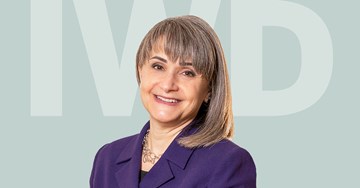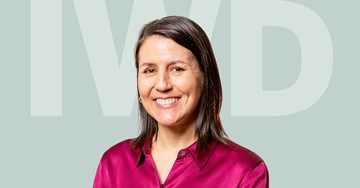In celebration of International Women's Day and its theme "Inspire Inclusion," Ivey spotlights five exceptional faculty members whose research and teaching are shaping a better, more inclusive future for women. Read on to learn insights from Alison Konrad on how organizations can strategically cultivate greater gender equity in the workplace and watch the video above.
Alison Konrad has harboured a deep-seated interest in women's equity and inclusion for as far back as she can recall. But it wasn’t until she joined the doctoral program at Claremont Graduate College in California that this passion took a pivotal turn. Collaborating with Barbara Gutek, a pioneer in the study of sexual harassment's impact on the workplace, Konrad's viewpoint was significantly broadened. Gutek's mentorship propelled Konrad into the forefront of discussions challenging the status quo, leading her to confront the term "sexual harassment" for the first time.
“It’s not that I had never experienced it before,” said Konrad. “I just had always thought as a young woman that it was just me not being able to handle an adult environment. But then I learned that it was a phenomenon that many women go through and it’s not okay. It really helped me to be more empowered in my work.”
And it shows. Now a Professor of Organizational Behaviour at Ivey, Konrad champions gender and diversity, impacting both her classroom and research. With more than 50 published articles on gender and diversity in organizations, her recent study, "Trickle-down and bottom-up effects of women's representation in the context of industry gender composition: A panel data investigation," exemplifies her ongoing commitment to advancing these crucial discussions.
In this significant study, using organizational-level archival data from more than 6,500 public and private firms in Australia ranging from 2010 to 2019, Konrad and her collaborators sought to better understand how gender impacts hiring. Their extensive study revealed that achieving lasting gender parity in the workplace first requires a thorough understanding of the current worker-gender distribution. It then necessitates implementing interventions across hierarchical levels – but particularly beginning with one key level.
Trickle-down and bottom-up effects
While “good news” is not always something that researchers can glean from their work, Konrad highlights two hopeful findings from the study that have the potential to reshape the landscape of workplace gender dynamics.
Of particular significance, Konrad found that in industries with limited representation of women, hiring more women at the middle management (as opposed to top management) had a positive effect on attracting more female employees at non-management levels. This is known as the trickle-down effect.
Also of note, in industries with higher female representation, having more women in non-management positions increases women’s representation in both middle and upper management (known as the bottom-up effect).
Why are these findings particularly compelling for Konrad? She delves deeper, referencing the 2023 McKinsey Women in the Workplace report, which identifies the concept of the "broken rung" — the substantial obstacle of advancing from entry-level to the first management position. This barrier, as outlined in the report, poses a considerable challenge to enhancing women's representation in business management.
“But our research tangibly shows that if firms make an effort in hiring at the middle management and entry-level positions, you can create a flowing pipeline between these levels. You can fix the broken rung,” she said.
While Konrad says these findings are promising, she and her colleagues encountered a concerning revelation during their research: a noticeable absence of either a trickle-down or bottom-up effect connecting lower to middle management with the top management team.
“These findings show that women’s leadership talent does not flow ‘naturally’ across the entire pipeline and that firms must pay attention to career progress for women leaders to diversify their management ranks at all levels, including the very top,” she said.
Repairing the ladder
Drawing from her research, Konrad outlines actionable steps organizations can take to foster gender equity across all levels:
- Begin with an analysis of your current workplace structure. Konrad advocates for firms to undertake a comprehensive analysis of their gender composition and confront challenging inquiries. These include: Are women, especially women of colour, afforded equitable promotion opportunities from lower levels? Is there parity in access to professional development opportunities between genders? And are women's voices adequately represented and heard at the boardroom table?
- For male-dominated industries, focus on hiring women directly into middle management positions. Konrad underscores the significance of hiring women into middle-management roles while simultaneously advocating for organizations to offer these women professional development opportunities, equipping them for advancement into higher leadership positions – creating a full pipeline across the hierarchies. Women in middle management will encourage more women to join the firm’s entry-level ranks.
- For female-dominated industries, focus on hiring women at the top. In these industries, senior-level women pull more women into middle management, through both personal sponsorship relationships and gender equitable talent management systems.
In support of these findings, The Lawrence National Centre for Policy and Management at Ivey, an independent public policy centre dedicated to bridging the business-government gap, is actively sharing Konrad's research and its policy brief to senior policy-makers in Canada’s federal and provincial governments.


